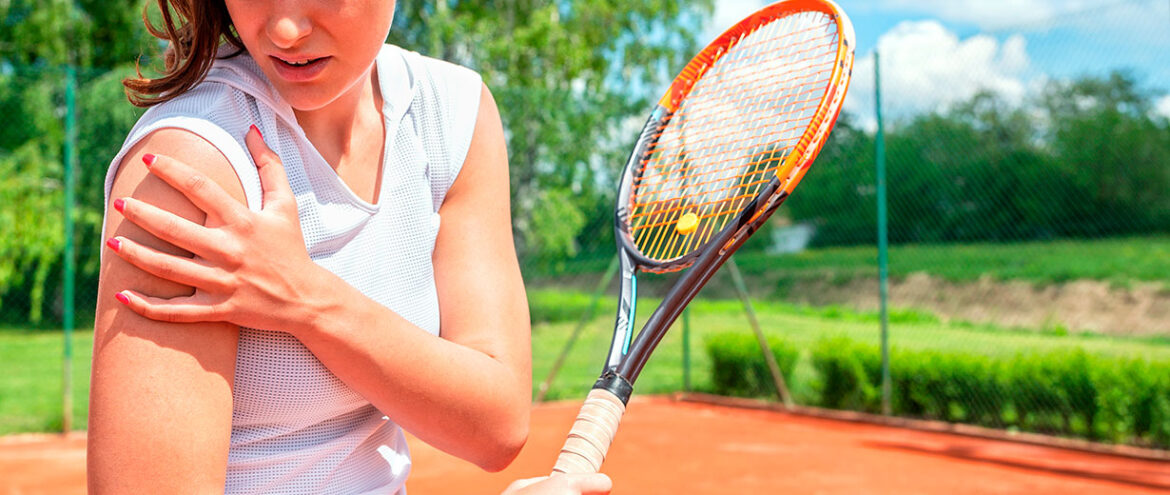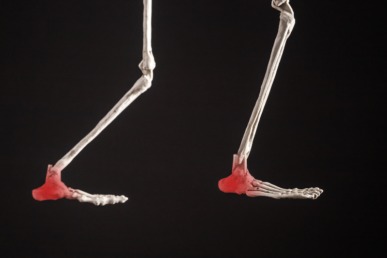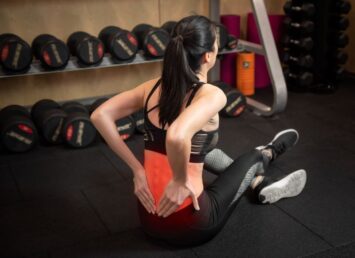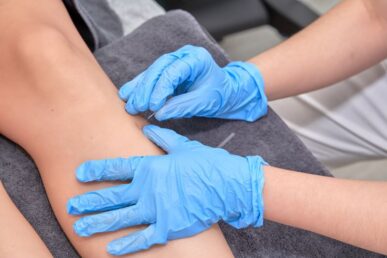Every tennis player is susceptible to shoulder pain at some point in time. Like any other prevalent injury in tennis, shoulder pain in tennis players is also caused due to repetitive movements.
Tennis involves full-body movement, specifically that of the shoulder and hands. Repeated overhead movement through your dominant shoulder is one of the main causes of shoulder pain in tennis players. A study on rotator cuff injuries in tennis players mentions, “The serve is the most energy-demanding motion in the sport, and it accounts for 45 to 60% of all strokes performed in a tennis match, putting the shoulder at increased risk of overuse injury and rotator cuff tears.”
The intensity of pain in tennis players aggravates as they continue to train even after mild shoulder pain. A study found that around 75% of tennis players experienced mild shoulder pain, while 10% experienced moderate to severe shoulder pain. The study also emphasized that 60.7% of the players reported some discomfort in the shoulder, not necessarily pain.
This means there can be more shoulder problems in tennis players than just pain that could later turn to shoulder pain and even worse.

Causes of shoulder pain in tennis players
There are mainly two causes of shoulder pain in tennis players:
Impingement syndrome
There can be internal impingement or external impingement. Both impingements are caused due to shoulder joint instability. The impingement syndrome is also closely related to scapula dyskinesis (imbalance of shoulder blades). Scapula is a scientific term for shoulder blades, whereas dyskinesis is a term for impairment in voluntary movement.
An external impingement is located on the exterior of the shoulder joint. In external impingement, the rotator cuffs are compressed. This is much more like a rotator cuff tear that is diagnosed with the help of an impingement test. Impingement syndrome is likely to happen during overpowered overhead serves and strokes.
The internal impingement is located in the inner side of the shoulder and is an effect of a bone to bone contact. When the tendons around this region are compromised and strained with repetitive overuse of injury, it can result in impingement.
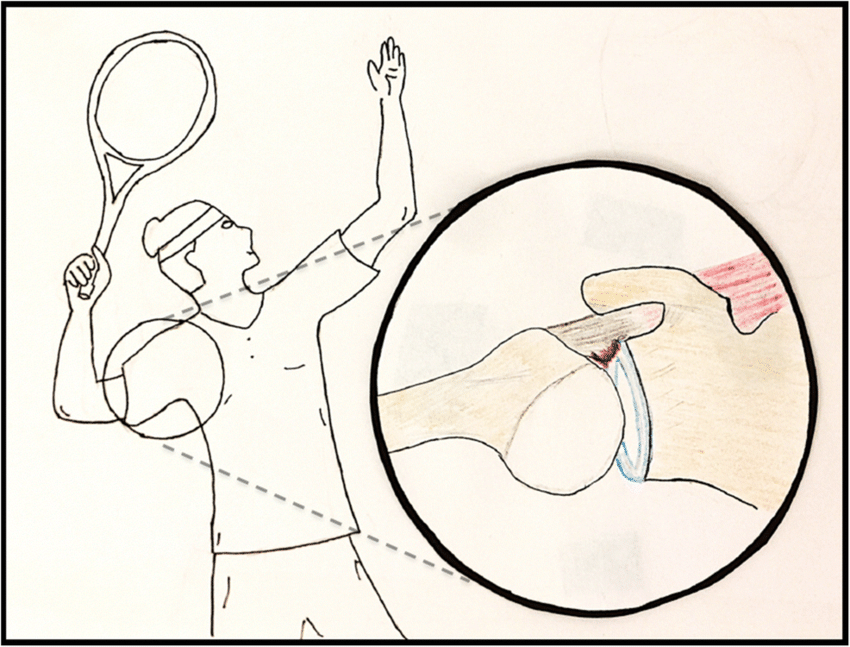
Glenohumeral instability
Glenohumeral instability is another main cause of shoulder pain. The Glenohumeral is one of the joints of the shoulder. It’s the ball and socket joint. In simpler words, it’s located around the humeral head. The humeral head is the head of the humerus bone (upper arm).
When a tennis player feels like the shoulder is slipping or when the humeral head does not fit right into the socket (Glenoid fossa), it’s termed glenohumeral instability. This is one of the imbalances that are common in tennis players.
These causes can easily be rectified with “rotator cuff and scapular muscle strengthening and surgical stabilization of the capsulo-labral complex for patients who fail a rehabilitation program” quotes a study on Shoulder Pain in Tennis Players.
Nonetheless, these are the two main causes of shoulder pain.
Other secondary causes can be:
- Damage to the rotator cuffs
- Damage to the tendons and ligaments around the shoulder joints
- Restricted internal rotation of the shoulder caused due to tightening of muscles around the back shoulder
How to treat shoulder pain in tennis players?

Most players suffer from shoulder pain (severe or mild), and early treatment is key to not letting it get worse.
Some causes of shoulder pain in tennis players include overuse injury that turns severe with time. A similar study rightly quotes, “Despite the injury, many players continue playing through pain rather than adjusting their training schedules or taking time off. This often increases injury severity.”
Sports medicine has shown tremendous success in recent years, and there is no way such pain should be tolerated. Even without missing your training, such shoulder pain in tennis players can be minimized and eliminated. The solution is chiropractor sports medicine. One such chiropractic sports medicine suitable for shoulder pain is the Pulsed Energy Replenisher 2000 or the PER 2000.
Depending on the severity of the injury, shoulder pain in tennis players can be treated through two methods:

Through non-operative methods
Non-operative methods are used if the tennis player is injured during a professional tour and cannot take time off.
Such a player is asked to take a rest from overhead activities. The usual non-operative treatments include NSAIDs to reduce inflammation, Corticosteroid injections, platelet-rich plasma as one of the treatments, and being part of a rehabilitation program.
Through operative methods
When the injury is too severe, and a tennis player cannot return to play, surgery is an operative method. The type of surgical method used depends on various factors like the type of injury, severity of the injury, tendon thickness, and more.
PER 2000 is an effective treatment that can become part of a rehabilitation program. It’s also useful in quick recovery after surgery. Pulse Electromagnetic Therapy delivers a pulsed electromagnetic field right into the body’s cells. This energizes the body, just preparing body to deal with pain better and faster recovery.
The PER 2000 is safe and comfortable. It’s used to treat many conditions apart from shoulder pain in tennis players. It’s an effective chiropractic sports medicine technique for treating fractures, plantar fasciitis, sciatica, and even lifestyle problems like poor sleep and depression.
If you are a tennis player suffering from shoulder pain and looking for a sports chiropractor in Austin, contact us today.

